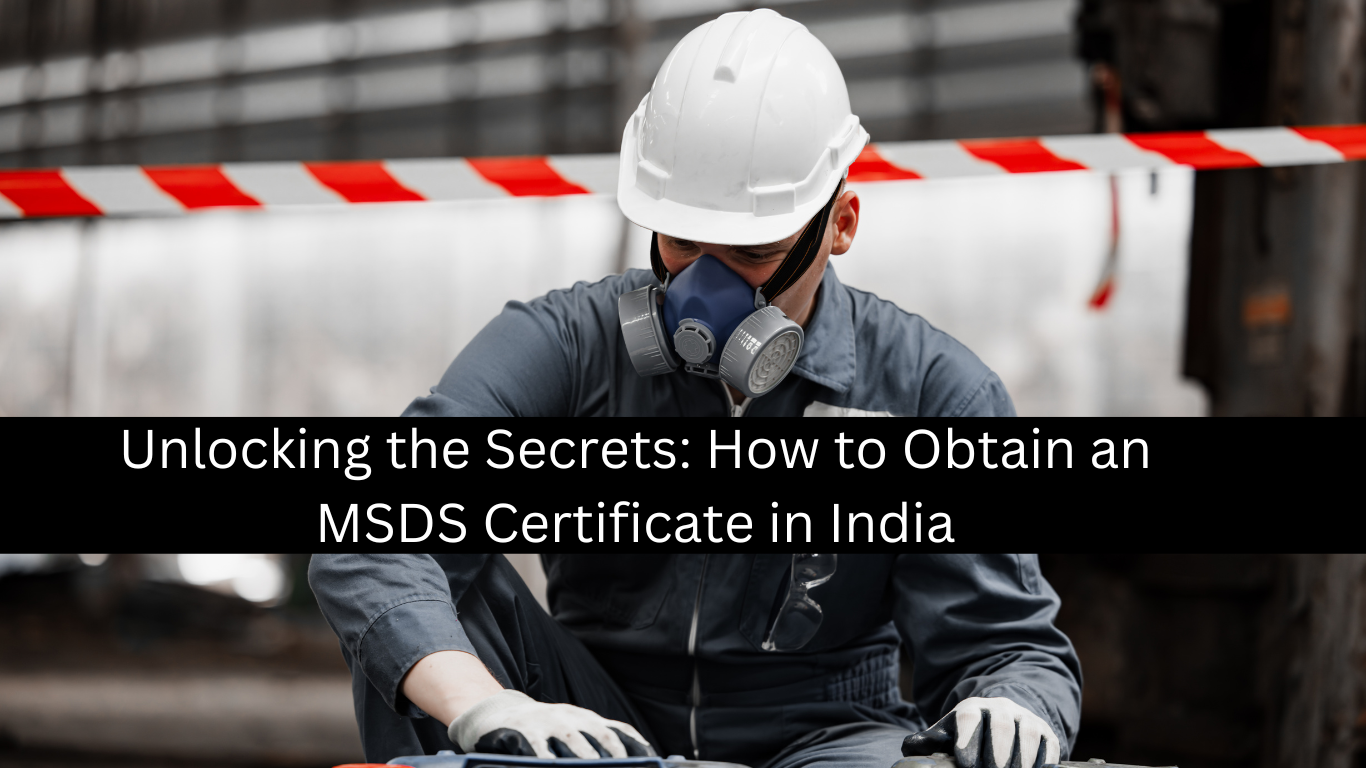Introduction
In the labyrinth of regulatory compliance, obtaining an MSDS (Material Safety Data Sheet) a certificate in India is pivotal for businesses dealing with hazardous materials. The MSDS certificate serves as a compass, guiding organizations through the intricacies of safety and ensuring compliance with the stringent norms set by regulatory authorities. In this comprehensive guide, we delve into the intricacies of securing an MSDS certificate in India, providing you with invaluable insights to navigate the regulatory landscape seamlessly.
What is an MSDS Certificate?
An MSDS certificate, also known as a Safety Data Sheet (SDS), is a crucial document that outlines the properties, handling procedures, and safety precautions associated with hazardous substances. It is not merely a regulatory requirement but a tool for safeguarding the well-being of workers, the environment, and the community.
Why is it Essential for Businesses in India?
In India, compliance with occupational safety and health regulations is paramount. An MSDS certificate is a legal requirement under various laws and regulations, including the Factories Act, 1948, and the Environment (Protection) Act, 1986. Non-compliance can result in severe penalties and even legal action, making it imperative for businesses to secure this document.
Navigating the Process : How to Get MSDS Certificate
Step 1: Identify Hazardous Substances
Before embarking on the journey to obtain an MSDS certificate, businesses must meticulously identify and catalog all hazardous substances used in their operations. This includes chemicals, solvents, and any materials that pose a risk to human health or the environment.
Step 2: Engage Qualified Professionals
To ensure the accuracy and completeness of your MSDS, it is crucial to involve qualified professionals in the process. Experienced chemists and safety experts can conduct thorough assessments of the substances used, ensuring that every potential hazard is identified and addressed.
Step 3: Compilation of Data
The compilation of data for the MSDS certificate involves collating information on the physical and chemical properties of the substances, potential health hazards, safe handling procedures, and emergency response measures. This meticulous process requires attention to detail and compliance with the standards set by regulatory authorities.
Compliance For MSDS Certificate Registration
Meeting the Standards of Regulatory Authorities
Obtaining an MSDS certificate necessitates adherence to the standards set by regulatory bodies such as the Central Pollution Control Board (CPCB) and the Ministry of Environment, Forest and Climate Change (MoEFCC). Businesses must ensure that their documentation aligns with the specific requirements laid out by these authorities.
Submitting the Application
Once the MSDS is meticulously compiled, businesses need to submit the application for the certificate to the relevant regulatory body. This step involves a thorough review of the documentation by regulatory authorities to confirm compliance with safety and environmental standards.
Overcoming Challenges While Getting MSDS Certificate
Navigating Language Barriers
For businesses operating in India, language barriers can pose a challenge during the documentation process. Ensuring that all information is accurately translated into the required languages is crucial for a smooth application process.
Staying Updated on Regulatory Changes
The landscape of safety regulations is dynamic, with updates and amendments occurring regularly. Staying abreast of these changes is critical for businesses to ensure ongoing compliance and the validity of their MSDS certificates.
Conclusion
In conclusion, obtaining an MSDS certificate in India is not just a regulatory obligation but a commitment to the well-being of employees and the environment. By following a meticulous process, engaging qualified professionals, and staying attuned to regulatory changes, businesses can not only meet the compliance requirements but also foster a culture of safety and responsibility.



